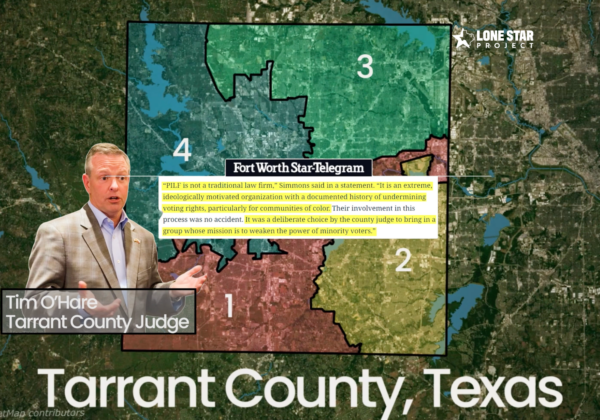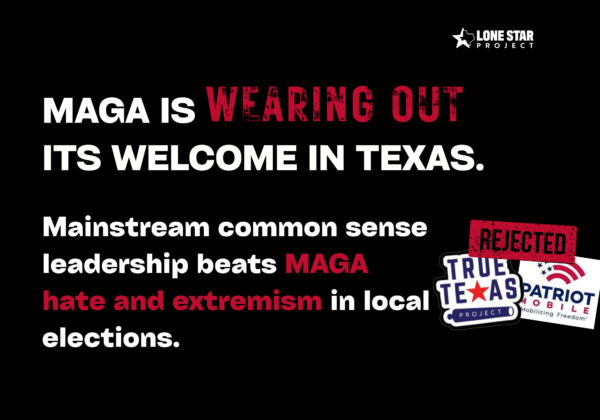1. Texas should exercise its electoral clout.
Texas is the second largest state by population and has 34 electoral votes. Under the current primary schedule (see the current tentative schedule here), the four states that will conduct primaries or caucuses prior to February 5th have fewer electoral votes combined than Texas. (Iowa – 7; Nevada – 5; New Hampshire – 4; South Carolina – 8. Source: U.S. Electoral College) However, if Texas waits until March 4th to conduct its primary, at least 20 states with a combined 156 electoral votes will have already acted, and the nominee for both parties will likely already be settled. Moreover, a number of other large states, including Florida, are actively considering moving their primary date to February 5th, which would even further diminish Texas’s clout. (Source: Associated Press, January 12, 2007)
2. The nomination in both parties is wide open.
For the first time in more than 75 years, neither a sitting President nor a Vice President is running for President. (Source: Austin American-Statesman, January 1, 2007) At least the early stages of the nominating process will be very competitive in both parties. Texas should be in the mix.
3. Texas should be more than a donor state.
Since at least 1988, neither the Republican nor the Democratic national parties have expended significant resources to win Texas votes. The nominating process is over by the time the Texas primary is conducted, and Texas has not been competitive during the general election. As a result, Presidential candidates who come to Texas are typically more focused on winning the support and contributions of donors rather than winning Texas votes. Texas donated the 3rd most money in 2004, but garnered little attention from any of the candidates. (Source: The Washington Times, October 29, 2004)
4. Primary participation in both parties is shrinking.
Over the last several election cycles, the participation in the primary as a percentage of the registered vote is shrinking. A competitive Presidential primary in Texas will generate interest and political activity within the political parties and generate higher turnout overall. This is particularly important in South Texas and in urban areas where general election contests for the State House, the State Senate and Congress are typically not competitive.
Percent of Primary Turnout compared to Registered Voters in Presidential Years
| % Turnout | Year |
|---|---|
| 35% | 1976 – Primary |
| 35% | 1980 – Primary |
| 26% | 1984 – Primary |
| 36% | 1988 – Primary* |
| 29% | 1992 – Primary |
| 20% | 1996 – Primary |
| 16% | 2000 – Primary |
| 12% | 2005 – Primary |
*First Super Tuesday
(Source: Texas Secretary of State)
5. Crucial national issues are at stake.
A controversial war is underway in Iraq. Armed battles are still taking place in Afghanistan. Energy and environmental policy, health care policy, sustaining Social Security and other retirement programs, and national education policy are all matters of intense national debate. The next President will be faced with tremendous substantive challenges that will affect every American. Texans should have the opportunity to participate in choosing the next President before the field has narrowed to only two national party choices.
Why the Texas Primary Might Not Move to Feb 5th
Rick Perry might be too weak to make it happen.
In order for the Texas primary to be moved, legislation has to be approved by the Texas State House and Senate and signed by the Governor. While it is apparent that there is considerable support among Democrats for a change, it is not yet clear whether Republicans will support an earlier primary date. Republicans control both the Texas State House and the Senate. In order for a bill to pass, it will have to have broad support from Republicans in the Legislature.
Perry demonstrated weaker support than even many losers
Rick Perry was re-elected with only 39 percent of the vote. Incredibly, 19 losing gubernatorial candidates lost with a higher percentage of the vote than Rick Perry.
| State | Party | Candidate | Percentage | Outcome |
|---|---|---|---|---|
| Rhode Island | Democratic | Fogarty | 49% | Lost |
| Maryland | Republican | Ehrlich | 46% | Lost |
| Minnesota | Democratic | Hatch | 46% | Lost |
| Florida | Democratic | Davis | 45% | Lost |
| South Carolina | Democratic | Moore | 45% | Lost |
| Wisconsin | Republican | Green | 45% | Lost |
| Idaho | Democratic | Brady | 44% | Lost |
| Iowa | Republican | Nussle | 44% | Lost |
| Nevada | Democratic | Titus | 44% | Lost |
| Oregon | Republican | Saxton | 43% | Lost | Alabama | Democratic | Baxley | 42% | Lost |
| Michigan | Republican | DeVos | 42% | Lost |
| Alaska | Democratic | Knowles | 41% | Lost |
| Arkansas | Republican | Hutchinson | 41% | Lost |
| Colorado | Republican | Beauprez | 41% | Lost |
| Vermont | Democratic | Parker | 41% | Lost |
| Illinois | Republican | Topinka | 40% | Lost |
| Kansas | Republican | Barnett | 40% | Lost |
| Pennsylvania | Republican | Swann | 40% | Lost |
| Texas | Republican | Perry | 39% | “Won” |
(Source: CNN America Votes 2006)
Rick Perry’s ability to lead an effort to move the Texas Primary date and allow Texans to have a meaningful voice in the Presidential nominating process will be a good measure of whether or not he is the actual leader of the Texas Republicans or little more than a lame duck just a few weeks into his current term.



